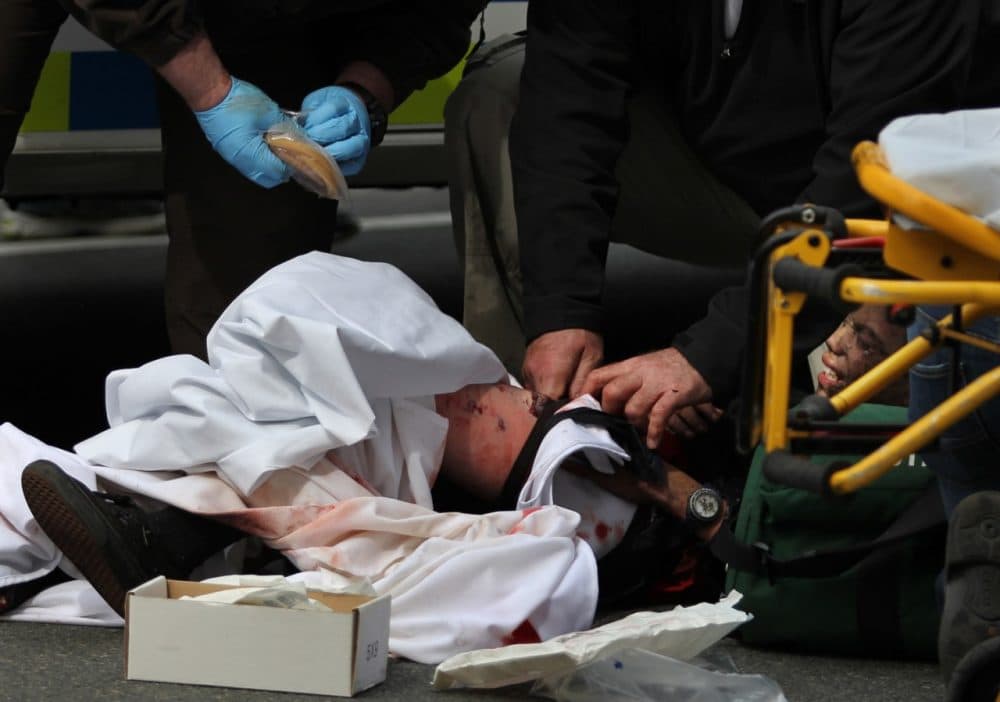Advertisement
Boston's Medical Response A Global Model
Resume
Last week's bombings resulted in three deaths and some 200 injuries.
As tragic as this even was for many, the death rate was surprisingly low.
According to a 2010 study by the Israeli National Trauma Registry, explosions in civilian settings are three times deadlier than those in combat, mainly because civilians tend to range widely in age and in health and most notably, because civilians don't wear body armor.
So how is it that the death toll last Monday wasn't higher?
This morning, the leading medical journal "The Lancet" praised Boston's response to the bombings, calling it an example for the global medical community. We take a closer look at the medical response.
Guests
Martha Bebinger, WBUR Reporter
Chief Jimmy Hooley, Boston EMS
This segment aired on April 23, 2013.